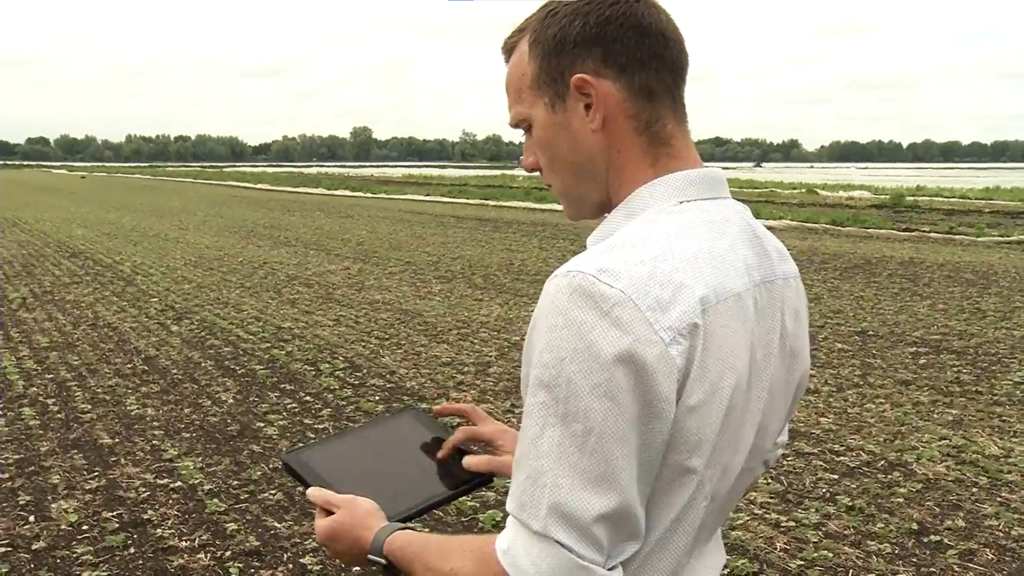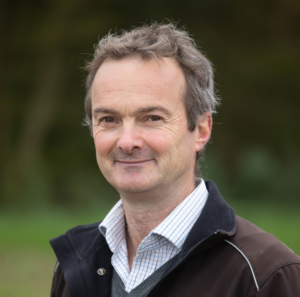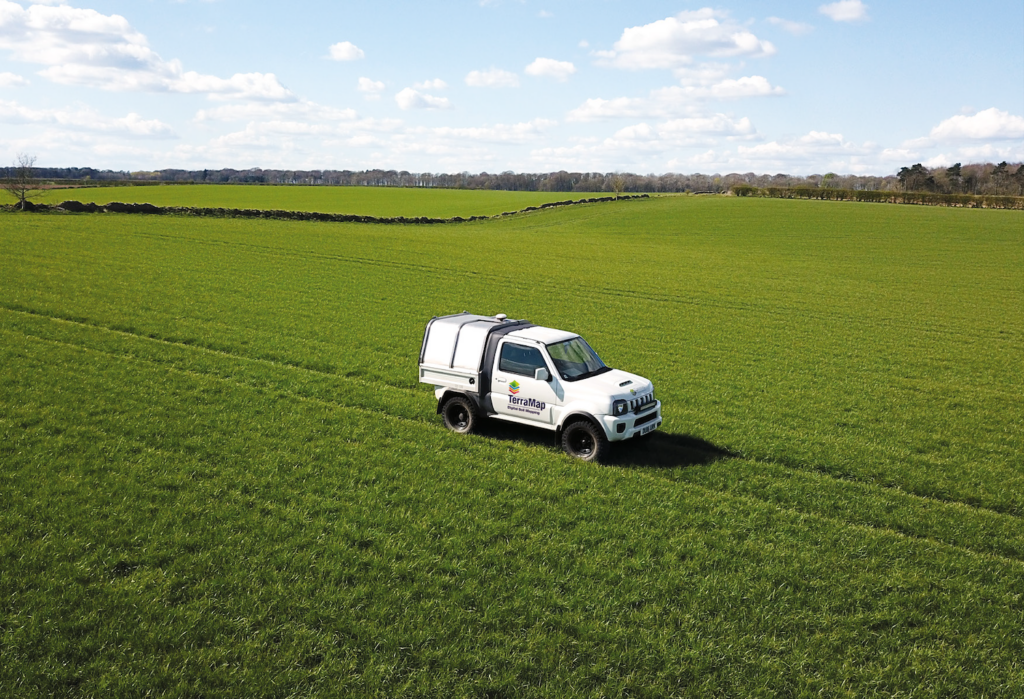A winning insight into soil dynamics and the nutrient cycling
28th September 2022
TerraMap Gold is an unrivalled soil nutritional and management service from Hutchinsons that combines the most comprehensive soil analysis with the most accurate soil mapping.
“TerraMap Gold is a premium service of TerraMap for growers who want an even better understanding of why the soil behaves like it does and its influence on crop performance, allowing for the most informed soil management decisions to maximise farm profitability,” explains Ian Robertson, Hutchinsons head of soils.
The difference with TerraMap Gold is that once the mapping is done, the system collects much more detailed soil samples, analysed through the Hutchinsons Healthy Soils Gold soils analysis, rather than the standard soil sample analysis.
The Gold Level soil test is a proven service that offers an in-depth soil analysis of all the key macro and micro soil properties and forms the basis of the Hutchinsons Healthy Soils Service.
“31 different elements are analysed by the Gold soil test, which makes it an ideal partner for the high-resolution data of TerraMap. The benefit of this increased level of data collection is the ability to make much more highly informed decisions about how to manage the soils more effectively,” he says.
Tailored application
Cambs Farms Growers in Ely, Cambridgeshire have used TerraMap Gold at the recommendation of agronomist Toby Clack.
“The information from TerraMap Gold has given us a greater understanding of what is happening in the soil nutritionally, allowing us to tailor applications of inputs specific to that crop,” said Stirling Fenton, organic crop manager at the farm.
“TerraMap has changed the way we do things. Over time we will see more uniformed looking crops and reduced inputs while maintaining yield.”
TerraMap underlines the overall farm strategy. Using the information from TerraMap in conjunction with agronomic advice and soil health expertise provides a greater overall understanding of the farm.
“The detail from TerraMap Gold has allowed us to pinpoint nutritional applications and reduce waste. Creating even crops eases crop and harvest management – making efficiency as high as it can be,” adds Mr Clack.
The Omnia system formulates variable rate plans easily using multiple layers of information. These maps can be seamlessly exported to a wide range of compatible machinery.
“The platform connects nicely with other systems in the sector. We can easily send maps created in Omnia directly to the machine and apply the specific rates we’ve asked for,” concludes Mr Fenton.

Agronomist Toby Clack recommended TerraMap Gold for Cambs Farms Growers in Ely.
TerraMap Gold offers much more in-depth information such as:
Buffer pH layer
“This is a different measure to the normal water pH and indicates how much reserve acidity there is in the soil, or what the resting pH of the soil is likely to be,” explains Mr Robertson.
“This is very important in understanding how nutrients cycle in the soil; phosphorous is key and has a peak cyclability between pH 6.2 and 6.8. If the buffer pH is outside these values, then the phosphate management policy needs to be carefully considered. So for example, if the field displays a large variation in buffer pH, this would mean that two phosphate management plans are required to optimise phosphorous utilisation.
“TerraMap Gold service also offers Cation exchange capacity and soil texture data, mapping out the soil’s ability to hold, store and exchange nutrients, as well as understanding the soil’s bulk density.
“This highlights potential structural issues, allowing for informed management decisions around cultivations and cover crops,” he notes.

Ian Robertson, Hutchinsons head of soils.
Nutrient reserves and availability
Mapped layers produced from TerraMap, show the total nutrient reserves and plant available levels of all the macro elements. These are expressed in kg/ha, which makes for much easier understanding and building of nutrient requirements for different cropping situations.
“There may be significant differences between the total reserves and the actual plant available nutrients, which are generally caused by one of the numerous nutrient interactions within the soil,” says Mr Robertson.
“However, as TerraMap Gold measures 31 parameters it allows for better understanding of these interactions and how to manage them for peak soils contribution.”
Structure and cultivations
“We know that relationships between the chemical elements in soil reserves can have a distinct effect on soil structure and workability,” he says.
“Couple this with soil texturing and organic matter content, and it can really help in making decisions about suitability of soils to different cultivation methods.”
“Regardless of cultivation methods applied, low calcium, high magnesium soils are always likely to retain moisture and be difficult to work and the clay and silt elements in the soil’s texture further help to predict the soil’s behaviour. Within TerraMap Gold, these are all measured and this allows for the planning of cultivation strategies in conjunction with bulk amendments to optimise the soil’s structure.
Methodology
The launch of TerraMap by Hutchinsons in 2019 revolutionised the way soil nutrient mapping was carried out. TerraMap uses gamma-radiation detection technology to deliver resolutions of over 800 points/ha, providing high definition mapping of all common nutrient properties, P, K, Mg, pH, soil texture (e.g. % clay, % sand, % silt), organic matter and CEC as well as elevation and plant available water. TerraMap is powered by SoilOptix Technology.
For more information visit the Omnia website.

